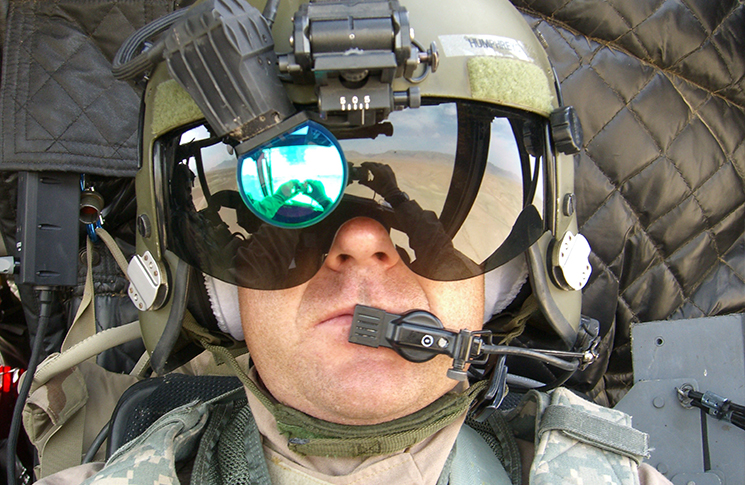Managing mental health issues in aviation is challenging, for pilots and managers
By Adrian Park
As professionals we have plans and systems for pretty much everything, but what’s your plan for the following scenario?
You’re the captain of a long-haul transoceanic flight. You’re a well-respected pilot—experienced, professional, capable and well-liked. Somewhere across the Pacific you’re looking out at the vast expanse of ocean and you suddenly realise how massive it is, how small you are and how completely reliant you are on this machine you call an aeroplane.
You begin to feel a sense of unease. You try to ignore the unease but you can’t shake it. You check your systems. Everything is green. You check them again. Nothing. The feeling grows, evolving quickly from disquiet to anxiety and then to dread. You try to fight it. You tell yourself everything is ok. You tell yourself you’re a professional pilot and you’ve been doing this for decades—why the fear? You try to focus on your breathing. You take a deep breath in and slowly breathe out. But you suddenly notice your heart accelerating—in fact, you can feel it thumping in your chest.
‘Not now!’
The words out of your mouth are surprising, as though from someone else. But you’ve felt this more times than you’re prepared to acknowledge. It’s been with you for the last 17 years of flying and you know what comes next. Sure enough, a rapid and overwhelming feeling you’re dying, choking, ‘losing control’ and ‘going mad’—all at once. You feel as though you can’t breathe. You begin to sweat so much it’s only a few moments before your entire shirt is soaked. Then comes the dizziness, light-headedness and then faintness.
Later, you’ll describe it this way:
Halfway across the open sea, I was suddenly stricken. My head seemed to be getting heavy. Then suddenly, I had a horrible feeling that I did not know who I was or what I was doing. I knew that I was flying a plane and that I had to reach land which was out of sight, but who I was or why I was there, I didn’t know. The attack lasted a minute or so. I was in a peculiar condition of half-consciousness, I think. Somehow, I still don’t know how, the next minute I was suddenly diving at a steep angle toward the sea. In a sweat of apprehension, I gained control of myself. Was it sunstroke? I didn’t know. Amid waves of nausea I recovered the aircraft …
This might seem extreme to the point of fiction but this is a factual account of a real pilot on a real flight. This really did happen and it happened to a world-renowned Australian pilot.
We’ll get back to the identity of this pilot shortly, but for now let’s circle back to the opening question: do you have a plan for this? To have a plan for ‘this’ means understanding what ‘this’ actually is. Some of you have probably already guessed. If you’ve seen one of the many Beyond Blue or Black Dog advertisements, then you already know these are the classic symptoms of severe panic disorder.
Mental illness is as real as a broken arm and deserves the same seriousness—from ourselves and our managers
As aviators, we always have a plan; in fact, we normally have several, ‘if this, then that’ plans. So, what’s your plan for this? Maybe your plan will be ‘self-management’. Maybe your ‘plan’ will be to tell yourself you’re working too hard and maybe it’s just stress and you just need some leave. Then again, your plan might involve what psychologists call ‘maladaptive strategies’. Maybe a couple of reds tonight will do the trick. And hey, if it ends up being a whole bottle like the previous few nights (and the few nights before), then that’s ok as long as you can cop a break from these damn feelings and tightness in your chest. You could tell your DAME but hell, then CASA will be involved and who knows what happens next? Maybe you could bring this up with your manager but, since you Googled your symptoms and are pretty sure you’ve got severe panic disorder, what kind of manager is going to want a pilot with ‘panic’ as their middle name?
Speaking of managers: what’s your management plan for this? You’ve got quite a challenge, haven’t you? How do you manage something they’re not telling you? And if they do tell you, what do you do now? You can’t have pilots with severe panic disorder at the front of an aircraft, can you? Which means you’re probably going to ground that pilot and when you do, why would anyone else suffering with the same symptoms ever fess up themselves? Maybe the easiest thing is to not have a plan, after all, these are aviation professionals we’re talking about. They of all people should be relatively free of mental health concerns, shouldn’t they?
But then a quick search of ‘aviation mental health’ and statements such as ‘350 British pilots grounded in the past five years because of mental illness’, ‘Mental illness second to cardiovascular disease in reasons for losing an aviation license’ and ‘Fatigue, circadian dysrhythmia, work patterns and lack of social support increase pilots’ psycho-social stress’ give you pause. So does the ongoing scrutiny into the Germanwings accident with the apparent murder/suicide of the A320’s crew and passengers by the copilot (who locked himself in the cockpit) and who had previously been treated for psychotic depressive episodes.
These thoughts—both piloting and managerial—are probably pretty typical when faced with aviation mental illness. But these thoughts can lead to what we could call ‘mythologising’ or ‘pathologising’ tendencies. What do I mean by that? To answer let me give you the identity of the ‘suddenly stricken’ pilot on that transoceanic flight: Charles Kingsford Smith. Yep, the national hero whose aviation exploits earned him the name the ‘conqueror of the skies’. That Charles Kingsford Smith.
In her recent biography, King of the Air: The turbulent life of Charles Kingsford Smith, Ann Blainey does a great job of demonstrating how Smithy was suffering from severe panic disorder and had been since his time at war. Of course, in the 20s and 30s, no vocabulary existed for such things and Smithy would often express other causes such as sunstroke or carbon-monoxide poisoning. He would do this publicly, whereupon many in the general public thought he was either ‘losing his nerve’ or becoming an alcoholic, even though Smithy’s prep for record-breaking flights was well known and involved, in his own words, ‘early to bed, gym, exercises every morning, no beers and very few cigarettes’. Nonetheless, someone sent him a white feather in the mail. The sender evidently thought Smithy’s illness was just a myth and he needed to ‘harden up’. What was happening here was a ‘mythologising’ of the illness, that is, understating or downplaying it, which then led to judgementalism around Smithy’s character and motivations.
Just as bad is when we mythologise our own illness. Smithy knew something was wrong. So did his wife Mary and his mother Catherine. On the eve of what would be his final flight, they begged him to rest. They could see what he couldn’t—the stress of those long flights, the constant pressure from the public and recent financial difficulties—required some fundamental changes. He wouldn’t listen and that final farewell was described as wretched. ‘Oh, I do wish, if he comes back safely, that he will never do these long flights again,’ his mother told a reporter in an unusual display of emotion.
No one can say with certainty what caused the disappearance of the Lady Southern Cross, not least because the aircraft has never been found. But we do know that every significant aviation accident has multiple causal factors, and Kingsford Smith’s mental state appears to be just such a factor. In the terms of James Reason’s accident causation model, Kingsford Smith had a large hole on one of his ‘Swiss cheese’ defence layers, when he set out from Croydon on that fateful trip.
We also know mental illness is as real as a broken arm and deserves the same seriousness—from ourselves and our managers.
If our mental health plan should account for our mythologising tendencies, then it should also account for our pathologising temptations. To ‘pathologise’ is to make the measure of the illness the measure of the person. This is where the illness—as a near horizon of its own limitations—obscures the potentiality of the person.
Again, Smithy shows this tendency. ‘Am I a squib?’, he would ask of himself. A squib was a colloquialism of the day and meant ‘a worthless person’. Imagine that—the great conqueror of the skies, the guy on our old 20-dollar bill, the guy whose name is on one of our biggest airports and numerous streets around the country, seeing himself as worthless because of his own illness.
We can do the same thing if we look at ourselves or others suffering with mental illness and buy into the false truth this is all there is and all there will ever be.
Consider Smithy. At the same time as he struggled with anxiety and panic disorder, he was able to complete a 34-and-a-half-hour leg from Suva to Albert Park on his record-breaking trans-Pacific flight. This was while sitting on wicker chairs bought from Wian’s furniture store in Glendale, with engine noise as loud as sledgehammers and wind through the cockpit so cold and biting a small silk Australian flag hung between the petrol gauges was ripped to shreds. Despite his illness, he accomplished great things. Despite our own struggles, so can we.
This leads us back to the original question and the conclusion: what’s your plan?
Consider the figure of Smithy hunched over the controls of the Southern Cross. Would your plan restore, redeem, strengthen and enhance the essence of Smithy or would it ignore, trivialise, suppress and even quench that spirit? What will your plan do for (or to) the ‘Smithys’ in your world?
Resources for a mental health plan:






Comments are closed.